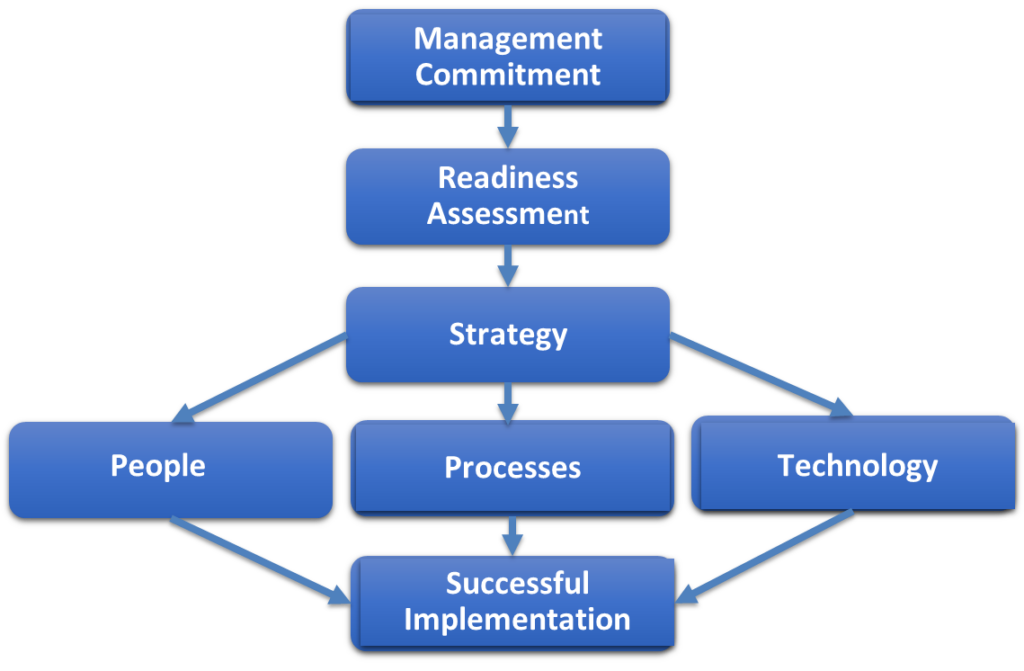Leave Silos in the Dust and Move Toward Business Integration

“A long time ago in a galaxy far, far away. . .” (at least that’s how March 2020 now feels), eyes tended to glaze over when I talked about business integration. Although the challenges of a global pandemic have made people listen more closely, I’m still not sure that everyone understands what this term means and why I evangelize the concept at every opportunity.
If associations are plagued by silos, it is because their leaders have seen them that way. That’s not due to poor judgement, it’s the result of an embedded system of operations that is difficult to shed. But now we have been forced to look through a new lens.
Beyond Individual Systems
Technology was the initial source of most of the successes or struggles involved in pivoting to remote work. Where the following systems were in place, business was able to continue without significant interruption. Where they were not, or are still lacking, virtual activities are an ongoing challenge.
- A cloud-based file sharing platform
- An association management system that makes it easy to collect, analyze, and summarize relevant member and customer data
- A learning management platform that offers the professional development members want and need
- A website that functions as a silent partner in member satisfaction, providing easy-to-access information and on-demand products and services
- An online community that fosters connection and collaboration
If your organization can check all these boxes, congratulations! You have the right tools for business integration. Because business integration is so closely associated with technology, people tend to believe that systems and platforms are the driver. In fact, software is secondary to culture, strategy, and goals.
This idea is summarized in the following definition from Margaret Rouse, editor of WhatIs.com, TechTarget’s IT encyclopedia and learning center:
Business integration is a strategy whose goal is to synchronize information technology (IT) and business cultures and objectives and align technology with business strategy and goals. Business integration reflects how IT is being absorbed as a function of business.
Business integration has many implications for the role of the corporate CIO, one of which is that the CIO will be taking on additional responsibilities such as business process management. In the past, the CIO was mainly responsible for IT processes. As technology increasingly becomes an embedded business function, many experts predict that information technology will fall under the domain of business leaders instead of technology experts.
Seize the Moment

I included the second paragraph of this definition because I think it illustrates how technology shifts from being an isolated initiative to becoming integral to every association activity. Presented in this global context, it can seem like the proverbial elephant, overwhelming. You thought you were on the right track with up-to-the-minute hardware and software, now a new layer of complexity has been added to the equation. How do you start building a comprehensive plan that aligns technology with people, processes, and goals across your organization?
The answer is one bite at a time. This is not an activity that will happen overnight. On the other hand, it is also possible to achieve immediate and ongoing results and efficiencies. There has never been a better time to get started. We are experiencing the social and financial consequences of disruption on a daily basis. The pandemic has revealed operational shortcomings for even the most tech-savvy organizations. Motivation is high among staff, volunteers, and members to take the necessary steps to prepare their associations to succeed in an uncertain future. These are some of the benefits of moving toward an integrated business strategy:
- Building an environment and culture for innovation
- Implementing strong digital platforms to enable operational efficiencies
- Enhancing member experience and access to content
- Creating a foundation for knowledge-based decision-making
- Achieving a sustained customer experience for audience growth, engagement, and monetization
- Creating an organization that moves as a team toward a set of well-defined goals
Begin With Strategy

At .orgSource, we believe that business integration starts with strategy. We advocate a holistic approach to planning that is well suited to manage volatility and disruption. Vision and resources are woven into a design that can evolve and change with necessity and time. The goals and objectives thread through the entire organization. Budgeting and technology, which previously might have been secondary considerations, assume pivotal roles.
Integrated planning begins with challenging assumptions and identifying motivations. The CEO and executive team lead this effort. The board, the staff, and the members should be prepared to go beyond managing trends to actually changing the business model, if needed. Characteristics of this approach are:
- Grounded in research and focused on creating the future the board/management team wants to achieve for their constituents
- Emphasis on member/customer experience
- Puts strategy first so that goals are realistic
- Includes the development of a range of scenarios, and identifies associated levels of risk
- Change oriented and designed to support flexible, innovative adaptations to uncertainty
- Integrates people, processes, and technology
- Assigns responsibilities from goals
- Is cyclical, sustainable, and based on operations
At .orgSource, we’ve worked with hundreds of associations, interviewed innovative leaders, and surveyed scores of association executives to develop a planning process that harnesses technology and translates strategy into action. This research also resulted in a white paper that outlines our process and is a roadmap to organizational transformation.
Although our approach is multifaceted, various steps can be initiated concurrently. A range of ideas are offered for leaders to consider that will position organizations for success in an uncertain future. Foundational to these concepts is abandoning the idea of an association as compartmentalized and embracing a more organic model, powered by technology and driven by a strategy that is woven through the fabric of the entire organization.
Don Dea, co-founder, Fusion Productions, and someone who has been an innovator for decades, put it like this: “Association leaders have to see their entire ecosystem. They need to look beyond the tight-knit definition of the profession they represent to the bigger picture.”
For those who are struggling to adapt to this new environment, initiating additional change may seem risky or daunting. But this is not the last disruption. The future requires different ways of seeing, doing, and being. There will always be a new normal on the horizon. The sooner we prepare to succeed in that world, the more successful we will be.
If you would like to learn more about how business integration can prepare your organization for the future, .orgSource is ready to help.

